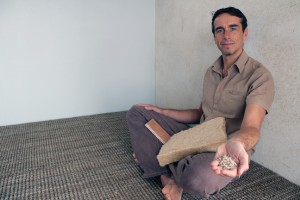Source: bakersfield.com
It may be distantly related to pot, but industrial hemp most definitely is not, say supporters of a California Senate Bill aimed at legalizing cultivation of the cannabis cousin in four counties, including Kern.
Senate Bill 676 or the California Industrial Hemp Farming Act -- which is on the governor's desk for signing by Oct. 9 -- would create an eight-year pilot program permitting farmers in Imperial, Kern, Kings and San Joaquin counties to grow industrial hemp for sale of its seed, oil and fiber to manufacturers.
After six years, the Attorney General would report on any law enforcement effects of the pilot, while the Hemp Industries Association, a co-sponsor of the bill, would report on its economic impacts.
The bill also lays out law enforcement provisions designed to make it difficult to grow marijuana under the guise of farming industrial hemp, including stipulations that farmers' crops are tested for THC content (hemp contains only trace amounts), that they clearly mark their fields and that farmer grow at least five acres.
Supporters include various companies that already use hemp (which is not a controlled substance unless it's planted) in their products, several farming organizations, the sheriffs of Kern and Kings counties and California legislators from both sides of the aisle, who passed the bill.
They say hemp could become a hugely beneficial "cash crop" for California farmers and that arguments the plant is indistinguishable from marijuana grows are bunk because it grows differently from marijuana -- in dense fields of tall stalks that resemble bamboo.
The bill's opponents -- who include members of the California Narcotics' Officers Association and the California Police Chief's Association -- say legalizing the cultivation of industrial hemp would undermine federal law and cause headaches for law enforcement officers trying to bust pot growers.
Though industrial hemp has "about as much THC as the poppyseeds on your bagel have opium," said the bill's author, Senator Mark Leno, D-San Francisco, its cultivation is still illegal as the result of outdated legislation from the mid-20th century.
"Currently we import the entire plant from Canada, Mexico, China ... (to make) thousands of legal products -- food, clothing, shelter, paper, fuel," he said. "It's only illegal when it's growing in the ground."
With SB 676, Leno said he hopes to bring the money California-based companies might spend on importing industrial hemp for their products back to California farmers.
He also said industrial hemp works well in crop rotations, grows without pesticides and requires less water than other crops.
Patrick Goggin, co-counsel to a nonprofit called Vote Hemp and the Hemp Industries Association, estimated that hemp products are a "$400 million a year industry" nationally and the passage of the bill would "remove the barrier for large expansive growth in the market."
"It's going to add agricultural jobs, manufacturing jobs, any number of jobs, processing plant jobs," he said. "More importantly for the state, it's going to create tax revenue."
California, Goggin added, has 55 percent of the hemp product manufacturers in the country.
But John Lovell, a lobbyist for the California Police Chief's Association and the California Narcotics Officers Association, said none of that matters because "cultivation of industrial hemp is illegal under federal law."
He said the bill is "basically forum-shopping for the hemp industry."
Leno said that because viable hemp seeds grow wild in the state, "there's no reason for the federal government to get involved at all."
Still, Lovell added that SB 676 has "virtually universal law enforcement opposition."
In Kern County, though -- where the sheriff's department raids large marijuana grows on a regular basis -- Sheriff Donny Youngblood sent Leno a letter in support of the bill.
So did the Kings County Sheriff, David Robinson.
"Law enforcement is not out to limit agriculture," said Francis Moore, chief deputy of the Kern County Sheriff's Department. "We try to make ourselves very informed about the realities and truths of different productions."
He said that issues may arise with "folks that are working outside of the industry" trying to mask their activities with the hemp provisions.
"I don't foresee this in that case as being overwhelming," Moore said, "but you never know."
While the Kings County Board of Supervisors also proffered its support for the bill, according to County of Kern spokesman Allan Krauter, the Kern County Board of Supervisors -- which is currently mired in a legal battle with the county's medical marijuana collectives -- has not taken a position on the bill.
Ultimately, though, California won't benefit from industrial hemp cultivation if no one's growing it.
And, at least in Kern County, there's not much interest among farmers either way.
"The benefits or negative effects the bill can have here, it's hard to say, because there's so little interest," said Matthew Park, executive director of the Kern County Farm Bureau.
"We support our members' crops that they are growing," he said. "So if all of a sudden, Grimmway Farms decided to get out of the carrot business and get into the hemp business, we would probably support them."
"It's up to each farmer what they want to do."







